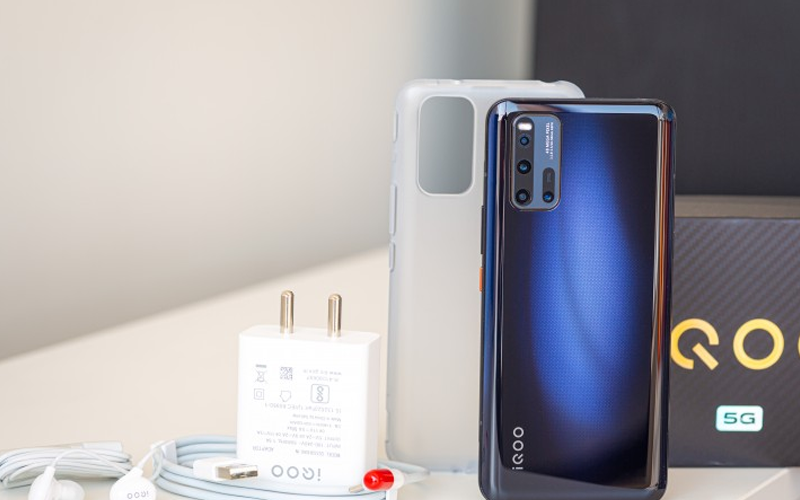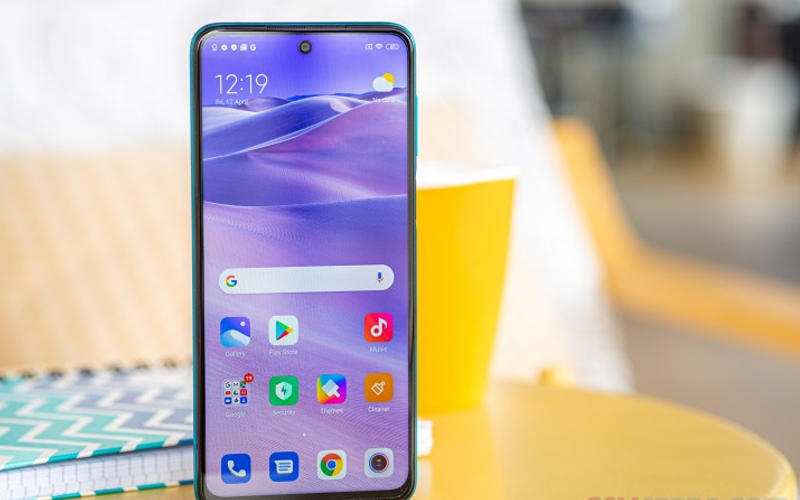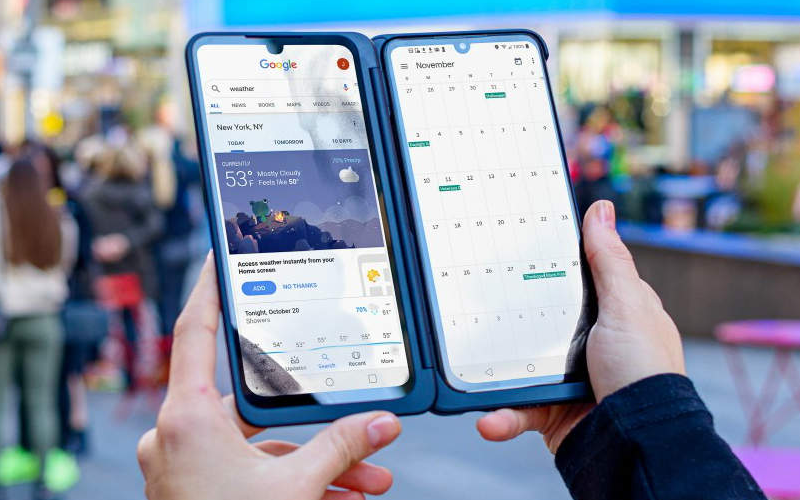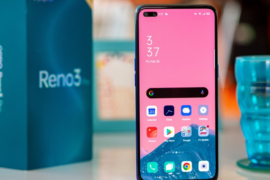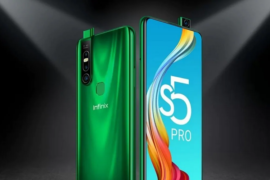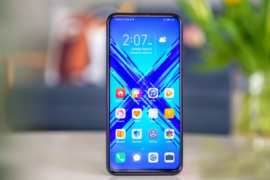SPECIFICATIONS
- Display6.44 inches
- Rear Camera48 MP/13MP/13MP/2 MP
- Front Camera16 MP
- ProcessorQualcomm Snapdragon 865
- Resolution1080 x 2400
- RAM6GB/8GB/12GB
- Operating SystemAndroid 10
- Storage128GB/256GB
- Battery4400 mAh
- WaterproofYes
- Dual SimYes
- Quick ChargingYes
DESIGN
The iQOO 3 5G worked in a recognizable style for a cutting edge cell phone from the higher classes. An aluminum structure keeps things together and is uncovered all around, while both the front and back boards are made of glass – Gorilla Glass 6, the specs state.
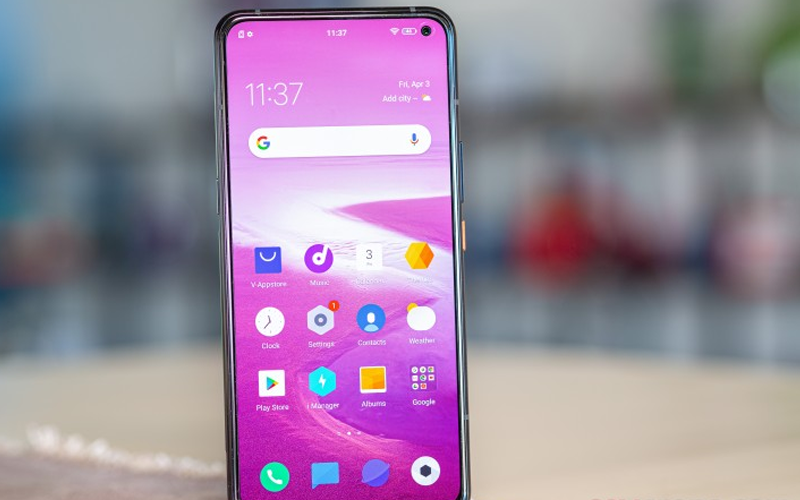
That is the essentials, yet there are subtleties that are explicit to the iQOO 3. Boss among those are the Monster Touch catches. On the correct side of the telephone (or, rather, on top when you hold in straight up), in the far edges, there are these leveled zones in the edge which fill in as shoulder catches for in-game activities. They are marked ‘L’ and ‘R’ in the event that you overlook what direction is which.
The catches have ‘contact’ in their name, and we at first idea they worked capacitively, yet after progressively cautious assessment, we’re certain they require a real press, a sensibly firm one. Consider it like the press work on Google Pixels.
On this equivalent side of the telephone, there’s additionally the force button and the volume rocker. Both are made of metal and have a consoling snap activity. The force button itself is finished so you can remember it by contact alone. It’s likewise orange which fills in as a pleasant complement against the dark glossy silk outline.
While regarding the matter of hues, our audit unit is in the Tornado Black shading plan. All things considered, dark it isn’t – carefully, it’s all the more a dull purple around the fringe with a lighter shade in the center. There’s additionally a dabbed example to be seen under the glass.
The camera get together is in the upper left corner with all the bits housed in a typical raised territory. Through and through, we have the blaze, the 2MP profundity sensor, the essential 48MP module, and the ultra-wide shooter. Alone to the privilege is the 2x zoom fax. A genuinely tactful arrangement of camera specs is printed here as well.
Two different choices are accessible – a Quantum Silver one we just got a brief look at declaration time and the Volcano Orange one we got the chance to play with more.
That last one is the nearest that the iQOO 3 5G gets to having the measure of style anticipated from a gaming gadget. In any case, even that is some way or another all the more a whacky and eye-getting colorway on a conventional telephone than a genuine gaming stylish. We can’t state we don’t welcome the structure restriction.
On the left half of the iQOO3 5G, legitimately inverse the volume down catch, is the thing that vivo reciprocally calls the AI catch or Smart catch. We’ll speak increasingly about it in the product segment of this audit, yet allows just rapidly notice here that you can cripple it totally if that is the thing that you wish.
The equivalent straightened zones at the parts of the bargains of the edge don’t have the ‘L/R’ assignment, and obviously don’t work as catches.
On the base of the telephone is the place you’ll discover the USB-C port, focused. To one side of it is the essential mic for voice calls and the card space – tragically, that will just take two nanoSIMs yet no microSD. The amplifier is to one side.
Up top is the auxiliary mic for in-call commotion dropping. Here you’ll likewise locate the 3.5mm earphone jack – we’ve nearly overlooked what these resembled, however we’re generally glad to see one.
A grille bored out of the casing over the showcase serves to let out the sound of the earpiece, we don’t remember a remarkable same specific arrangement. It’s all around baffling that this earpiece doesn’t serve as the subsequent speaker – sound system sound is an unquestionable requirement for a gaming telephone, the manner in which we take a gander at things.
The 6.44-inch AMOLED show is encircled by sensibly measured bezels, similarly estimated on the sides and the main, somewhat thicker on the base. A minuscule pattern in the upper right corner of the board lets the selfie camera come around – and it is one of the littlest punch gaps we’ve seen.
The telephone comes with an industrial facility introduced screen defender, which is quite all, however it just bugs us hugely that the gap for the selfie camera isn’t based on the genuine selfie camera.
The iQOO 3 5G is a remarkable weighty unit, weighing in at 215g. That is somewhat the standard for the section however with the Redmi K30 Pro tipping the scales at 218g and the Realme X50 Pro 205g. It’s a barely chunkier unit as well – it’s 9.2mm thick close to the 8.9mm of every one of these other two. The iQOO 3 5G’s impression is like the Realme’s with which it shares a 6.44-inch show corner to corner, while the Redmi is somewhat greater genuinely in light of the fact that it has a bigger 6.67-inch screen.
DISPLAY
The iQOO 3 5G has a Super AMOLED show with a 6.44-inch inclining. It has a 1080x2400px goals in a 20:9 perspective proportion and a pixel thickness of 409ppi. A couple of those pixels are consumed by the selfie cam pattern, yet it is one the littlest punch openings, so we’ll give it a pass.
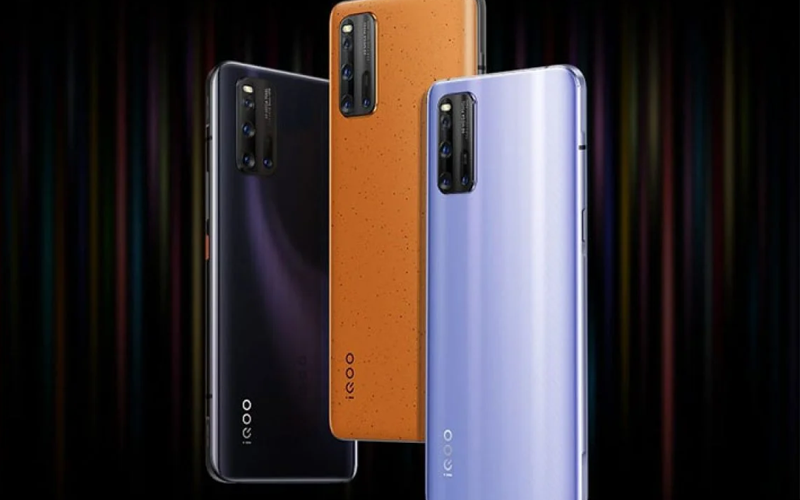
A significant oversight on the iQOO 3 5G show specsheet is a high revive rate. Truly, it features 180Hz touch examining, so it’ll enlist input bounty fast, however the showcase can just revive at 60Hz so game titles are topped at 60fps as well. Top of the line cell phones of the day accompany 120Hz or if nothing else 90Hz boards and the 60Hz of the vivo are especially frustrating given its emphasis on gaming.
One territory we can’t gripe about is brilliance. We estimated a limit of 848nits in auto mode when the iQOO 3 5G was under direct light and 518nits with the auto switch separated – the two numbers among the best available. Least brilliance was additionally a generally excellent 2.1nits.
Shading dealing with on the iQOO 3 5G is finished with a determination of three modes and an extra stepless cool-to-warm slider. The out of the container Standard mode is the best approach for clear hues and a wide range, and it does a genuinely nice activity of duplicating the DCI-P3 shading space. We estimated a normal deltaE of 4.6, yet the white point and the whole grayscale were moved towards blue (deltaE of around 10 for the bundle of them). Knocking the slider halfway to the privilege heats up the white point to a close to consummate deltaE of 1, however the darker grays do keep a somewhat blue tinge, regardless of whether they do improve a great deal. The normal deltaE, for this situation, is 2.8.
The Normal mode is tuned for sRGB substance, and we estimated a normal deltaE of 2.7 for our sRGB test samples. The recognizable saw dormancy of such modes is available here also.
Splendid mode is by and large about as precise as Standard – a normal deltaE of 5.1 for our arrangement of DCI-P3 designs. It’s not more splendid fundamentally either.
The iQOO 3’s showcase is HDR10+ agreeable. It’s still not on Netflix’s rundown of upheld gadgets, be that as it may, regardless of having the best possible DRM abilities (Widevine Level 1). YouTube serves HDR recordings to the telephone, and you can see it naturally switch its hues and splendor as needs be the point at which it distinguishes HDR content.
PERFORMANCE
The iQOO 3 5G has some legitimate leader internals. First of all, it’s the Snapdragon 865 in charge – the absolute best chipset on an Android telephone at this moment. The handset comes in a few distinctive RAM/stockpiling levels with 6GB, 8GB or 12GB of RAM, and 128GB or 256GB of capacity. Our audit unit is the top spec with 12 gigs of RAM and 256GB of capacity.
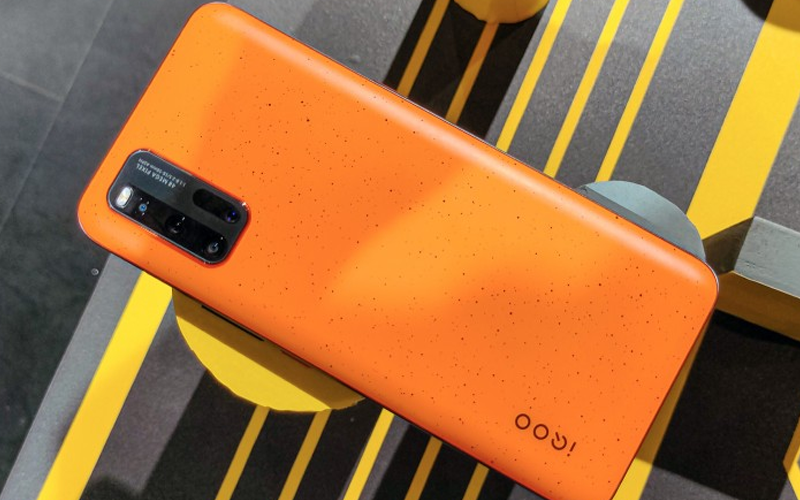
What’s more, that capacity is additionally the quickest accessible – UFS 3.1 must be found here, all alone NEX 3S 5G, or the Redmi K30 Pro and Pro Zoom. Not even the simply declared OnePlus 8 Pro has it, and we as a whole expertise enormous OnePlus is on speed.
So we figured we’d start our investigation of the iQOO 3 5G’s presentation from capacity speed. We tossed some AndroBench at it and keeping in mind that successive peruse and compose speeds are in a similar ballpark as UFS3.0 gadgets, the iQOO 3 5G beat them in irregular peruse and compose, all the more stunningly in the read part. Regardless of whether you’ll have the option to feel the thing that matters is an alternate issue, however the realities are the iQOO is, without a doubt, quicker.
The iQOO 3 5G kept up predictable benchmark scores the equivalent for rehashed runs, while likewise remaining moderately cool simultaneously, showing a decent warm plan and promising continued superior.
Diving somewhat more profound into proceeded with load, we ran the CPU choke benchmark for 60 minutes. The telephone recorded a normal of 232,518 billion guidance for each second, creeping in front of the nubia Red Magic 5G we as of late explored with a greatest that was likewise higher than the nubia’s. The iQOO 3 5G throttled somewhat, down to 90% of its greatest presentation, yet even in those plunges, it stayed near the nubia’s base outcome.
BATTERY
The iQOO 3 5G depends on a 4,400mAh force pack to keep the lights on and it’s a reasonable limit given the less force hungry 60Hz presentation – toss in a high revive rate board, and it’s excessively little as we saw on the nubia Red Magic 5G (6.65″, 144Hz, 4,500mAh, 83h).
The iQOO 3 5G additionally figures out how to change over its battery limit into the screen-on time in an extremely effective way. We timed over 25 hours of circling recordings disconnected and 14:28h of web perusing over Wi-Fi – appropriately great outcomes. The 3G talk time wasn’t as great, however effectively adequate at 27:34h. A not too bad to-great backup estimation regardless of the leader Snapdragon’s outside modem gathered together an admirable presentation from the iQOO 3 5G, summarized in a 118h Endurance rating.
vivo’s promotion materials express a charging time of 15 minutes to half, yet we would say, it took 18mins – still appropriately quick. At the 30-minute imprint, we were taking a gander at 76%, which is another extraordinary accomplishment. The charging rate tightens around that time, and a full charge is reached in a short time.
Those numbers are for the packaged 55W connector and the exclusive link. Utilizing industry-standard USB PowerDelivery peripherals will mean a more slow charging time.
CAMERA
A great deal of times on gaming-driven telephones, the camera framework is lower on the rundown of needs. Taking a gander at the iQOO 3 5G’s spec sheet, that doesn’t give off an impression of being the situation here. While there are unquestionably no extraordinary faxes or tremendous sensors, the telephone has a balanced three central length arrangement with an additional profundity detecting module.
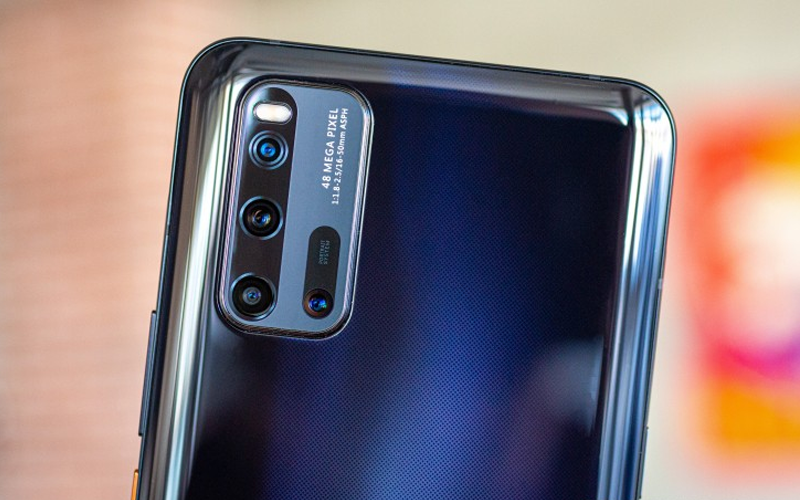
The essential camera is the pervasive 48MP Quad Bayer arrangement – a 1/2.0″ sensor with 0.8µm pixels with the RGB shading channel above them gathering them into fours to make up 12MP pictures in the default mode. The focal point has a f/1.8 opening, and keeping in mind that vivo doesn’t indicate a central length, we assemble it’s in the 25-26mm comparable ballpark. There’s no OIS.
A short fax module is additionally present, giving a 2x optical zoom ability. Conveying a 50-ish millimeter comparable central length, the focal point has a f/2.5 gap and isn’t balanced out. The sensor on this one has a 13MP goals.
At that point there’s the ultra-wide cam. Vivo says it covers a 120-degree field of view, contracting down somewhat to 117 when you empower the product contortion revision. And afterward, the EXIF information reports a 15mm comparable central length, which is not one or the other. In any case, it’s truly wide, and it has self-adjust, which is a tolerably serious deal – even leader ultrawides are regularly either extremely wide however fixed center, or with self-adjust yet not too wide. The opening on this one is f/2.2, while the sensor has 13MP to work with.
Last, and particularly least, there’s additionally a 2MP ‘bokeh’ camera – one of those modules that ordinarily just up the camera include without contributing much, all things considered, yet everybody continues doing it.
Over on the front, the small perforate the showcase houses a 16MP selfie cam with a f/2.45 opening – it’s one of the dimmer focal points we’ve seen on a forward looking camera in some time.
The camera application is a similar one we’ve seen on vivos lately, and we’re not fans. It’s excessively dissipated and unintuitive for our preferring, however we can value that essentially becoming accustomed to it as you own the telephone for some time will help.
Regardless, having a zoom selector (0.6x/1x/2x) in the viewfinder and a different ‘focal point’ selector (Super wide-edge/Bokeh/Super full scale) is confounding. The ‘Excessively wide point’ alternative is adequately equivalent to the ‘0.6x’ from the zoom selector. At that point the ‘Overly full scale’ mode is a carefully zoomed-in see from that exact same ultra-wide camera – it makes you believe you’re getting a bigger amplification, however it’s only a harvest, which is then upscaled back to 12MP. Be that as it may, pause, there’s more – the ‘Bokeh’ mode secures you in the 1x principle cam and is an unexpected thing in comparison to the devoted ‘Picture’ mode, from the best possible mode selector on the base, which likewise has face changing highlights other than the bokeh. Urgh.
In any case, the main modes are exchanged with side swipes as on most different telephones, and the ‘More’ tab lets you get to less normal modes. From that point, you can likewise redo the modes you have accessible in the viewfinder, which is a decent touch that just Samsungs appear to offer.
There’s a Pro mode that lets you change photographic parameters yourself. You get the opportunity to choose ISO (50-3200), screen speed (1/12000s-32s), white equalization (presets and a temperature slider), center separation (no center topping), and presentation remuneration (- 2/+2EV in 1/3EV augmentations), with effectively open auto fastens on all and a worldwide ‘reestablish’ catch to return everything to auto. An electronic level is additionally accessible, yet there’s no metering mode choices or a live histogram.
While the Pro mode is accessible on each of the three cams, which is an incredible thing, the rationale for working them is completely without… rationale. There’s a 1x/2x selector, and a focal point selector and exchanging cameras is finished with the focal point selector (so far genuinely sensible), however then the 1x/2x flip switches between the local field of view and a carefully zoomed in one. Why? The 1x/2x switch isn’t accessible on the ultra-wide cam, so at any rate there’s that.
The settings menu offers a portion of the typical controls like debilitating the mimicked shade sound, geotagging, and the alternative to reflect your selfies, and it’s here that you’ll locate the self-clock (instead of the viewfinder). The iQOO 3 5G offers eye self-adjust which we haven’t seen on some other telephone aside from the Sony Xperia 1.
Light photographs out of the iQOO 3 5G’s primary cam have satisfying punchy hues without going into outrageous oversaturation. Dynamic range is sensibly wide as well, however we’d have valued some better shadow improvement – for what it’s worth, the shadows are unreasonably dull for our preferring. Be that as it may, this makes for a general contrastier look which some may appreciate.
What’s harder to acknowledge is the general absence of pin sharpness and meaning of fine detail while analyzing the photographs at 1:1 amplification. Foliage is rendered in an especially delicate and soft manner. Generally speaking – incredible sunlight photographs from a far distance, meh from very close.
Shooting in the ostensible 48MP goals accompanies a significant commotion punishment. On a to some degree positive note, you will have the option to extricate more detail out of these shots as our studio scene appears, yet the genuine focal points aren’t noteworthy.
The ultra-wide cam has its own issues with picture quality like the high commotion levels and rather solid purple bordering in high-differentiate territories. By the by, it’s one of the better ultra-wide cams we’ve seen, leads notwithstanding. For all the commotion we’re seeing, there’s likewise a great deal of detail. Dynamic range is likewise pleasantly wide, particularly so for a ultra-wide cam, which are commonly trailing in this regard. Hues are very much coordinated between the two, put something aside for a slight cyan inclination in the ultra wide’s blues. Incredible appearing here.
There’s the choice to kill on or the product mutilation rectification. Having it on helps gigantically, especially when you have straight lines along the edges of the casing. You’d lose a little inclusion, and some measure of corner delicate quality can be seen yet we wouldn’t get too focused on that and keep the amendment on.
Proceeding onward to the fax, we’re seeing a knock in shading immersion close by some broad heating up of the tints, yet hues stay engaging still. Clamor stays present in the 2x pictures also, yet it’s not really an issue. Detail is alright, these are not the most keen 2x shots we’ve seen, yet they’re effectively adequate. Dynamic range is on the more extensive side of normal as well.
Low-light pictures out of the iQOO 3 5G aren’t stupendous. The fundamental camera creates rather delicate shots, which may not be boisterous, yet aren’t exceptionally nitty gritty either. Darker scenes end up underexposed, and the telephone likewise battles with white parity in our dominatingly energetically lit scenes.
The ultra wide-edge cam makes a reasonable showing in low light, as ultra wides go. The telephone will in general underexpose and its pictures are uproarious, however these apply to most cameras of this bore. There’s fair detail and hues have a sensible degree of immersion held, so’s acceptable.
The iQOO 3 5G can take representations with both the primary camera and the fax. On the off chance that you haven’t been around here the previous barely any years, we’ll repeat for you.
Shooting representations with the wide cam implies better execution in testing light as it’s regularly the more excellent module, yet comes to the detriment of a short subject separation and not exactly perfect viewpoint.
Shooting with the fax, alternately, puts an increasingly agreeable separation among you and your subject and makes for an all the more complimenting viewpoint with regards to facial extents, however for the most part implies sub-par picture quality in dimmer conditions.
Having the option to pick is the best methodology, and that is the situation on the iQOO 3 5G. The default amplification when you hit picture mode from the mode selector is 2x – viably, the telephone recommends the unrivaled point of view, however you can choose the more extensive cam in the event that it suits the conditions better.
2x representations out of the iQOO 3 5G have progressively ‘human’ hues while the fundamental cam makes for an increasingly yellowish look. In every single other regard, the outcomes are almost indistinguishable. Subject recognition is acceptable, yet not dependable (behind the correct ear in the main example, or the left shoulder disappeared in the fourth shot). The bokeh has a characteristic look in the 2x shots, however is somewhat absurd in the 1x pictures – that much haze simply doesn’t go with that wide a field of view. HDR continues working in picture mode, which is acceptable.
Selfies out of the iQOO 3 5G are just about alright. Dynamic range is on the limited side, and we’d value some more sharpness and detail than what we’re getting, however hues are on point.
The vivo iQOO 3 5G records video at up to 2160p at 60fps with the two its principle and fax cameras. The ultra wide-point cam beat out at 1080p/30fps. You get the chance to pick between the h.264 and h.265 codecs as well.
The fundamental camera’s clasps in both casing rates in 4K have almost indistinguishable degrees of detail, and the telephone is very acceptable in this regard. The two have pretty much a similar piece rate – at around 50Mbps, it’s a great deal of bits for 4K30, and an average number for 4K60 on a telephone. The recording is to some degree uproarious, in any case, and dynamic range is very constrained. There’s additionally a curious purplish shading shift which we didn’t see in stills by the primary cam.
1080p recordings display precisely the same properties, with a curve – since 1080p/30fps is the main mode to have adjustment, it accompanies the required harvest.
SOFTWARE
What makes a gaming telephone? Incredible internals, high invigorate rate show, ostentatious plan, extraordinary cooling, additional controls? Indeed, the vivo iQOO 3 5G has just a portion of these checkboxes ticked, however is that an awful thing? We’ll embark to discover.
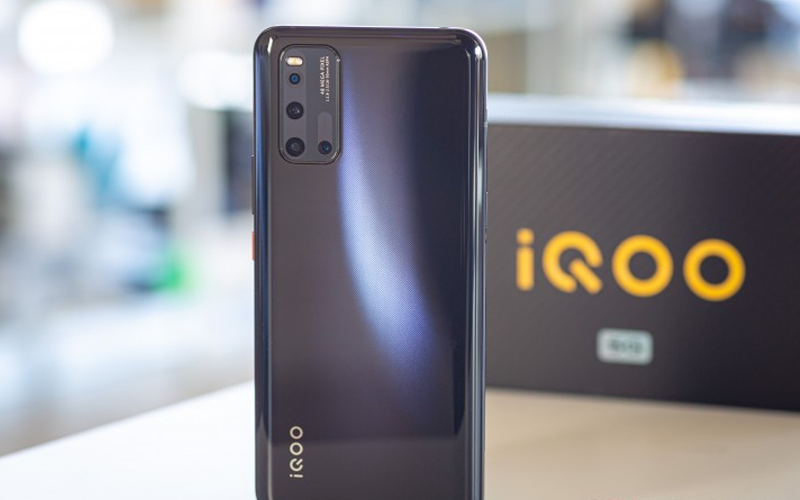
OK, the additional controls are there – as the Monster Touch shoulder fastens on the correct side of the handset. Discussing beasts, Monster Inside is the slogan for the iQOO 3 5G, and if that insinuates the Snapdragon 865, we’d concur – it’s out of this world intense a chipset on an Android cell phone at this moment. The quickest accessible UFS 3.1 capacity must be found inside this vivo and a bunch of different telephones at the hour of composing, so the ground-breaking internals are represented too.
Vivo publicizes a ‘Carbon Fiber Vapor Cooling System’ which isn’t exactly as outrageous as an inherent (nubia Red Magic 5G) or a snap-on (ROG Phone II) fan, yet it’s something – we’d state the iQOO is most of the way there on the ‘extraordinary cooling’ bit.
Regardless, the iQOO 3 5G is feeling the loss of that ‘gaming’ structure with sharp lines and splendid red or green hues. It comes in a striking orange shading alternative, which we’ll examine on the following page, yet it’s in any case a subtle handset. So – no gaming stylish, yet positively.
Which carries us to the one significant exclusion with regards to the iQOO 3 5G’s gaming goals – it’s just got an a ‘plain’ 60Hz screen. More is better with regards to the invigorate rate, and other gaming telephone choices convey. It’s as yet a really incredible AMOLED screen as our tests will appear, and with a 180Hz touch examining it ought to rush to identify activity.
Should I Buy It?
For what reason do we need to mark things and put them in classifications? For what reason does the vivo iQOO 3 5G must be a ‘gaming’ telephone? Wouldn’t it be able to simply be a nearly lead with some additional shoulder catches? It can, and it is.
It has perhaps the most splendid shows out and out, not only at its cost. It can likewise keep it lit for an insane long time on a solitary charge, and much after it goes through all the juice, it’s only minutes to get it back ready for action. The iQOO 3 5G has likewise got the prevailing exhibition champ of a chipset inside and vivo’s figured out how to plan the internals so it conveys that presentation long haul absent much by way of choking.
Maybe the one territory where it doesn’t satisfy the lead standard is the camera – it’s not awful, yet normal arrangements can be found on a lot less expensive telephones. Alright, short the self-adjusting ultra-wide which is the champion module here as far as we can tell.
So at long last, in the event that you need a balanced elite handset at a sensible cost and you’re alright with exchanging off a touch of camera ability as an end-result of a mindful gaming inclination – the iQOO 3 5G will suit perfectly.
